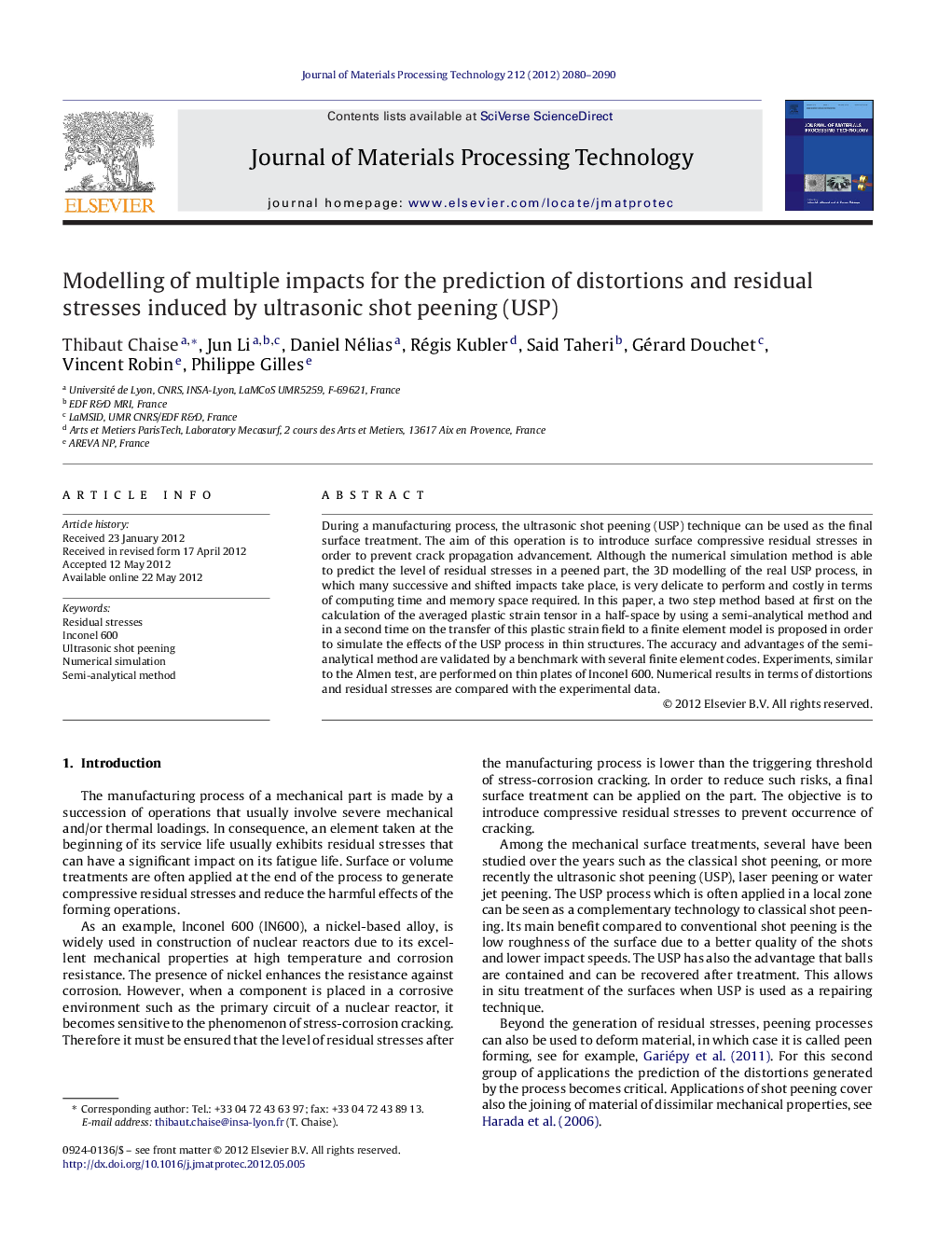| Article ID | Journal | Published Year | Pages | File Type |
|---|---|---|---|---|
| 795928 | Journal of Materials Processing Technology | 2012 | 11 Pages |
During a manufacturing process, the ultrasonic shot peening (USP) technique can be used as the final surface treatment. The aim of this operation is to introduce surface compressive residual stresses in order to prevent crack propagation advancement. Although the numerical simulation method is able to predict the level of residual stresses in a peened part, the 3D modelling of the real USP process, in which many successive and shifted impacts take place, is very delicate to perform and costly in terms of computing time and memory space required. In this paper, a two step method based at first on the calculation of the averaged plastic strain tensor in a half-space by using a semi-analytical method and in a second time on the transfer of this plastic strain field to a finite element model is proposed in order to simulate the effects of the USP process in thin structures. The accuracy and advantages of the semi-analytical method are validated by a benchmark with several finite element codes. Experiments, similar to the Almen test, are performed on thin plates of Inconel 600. Numerical results in terms of distortions and residual stresses are compared with the experimental data.
► We developed a fast model for the simulation of peening processes. ► We showed that three impacts can be sufficient to model a full peening process. ► A velocity distribution plays a minor role, and the average velocity is the key parameter. ► The method can be transposed to any kind of structure.
